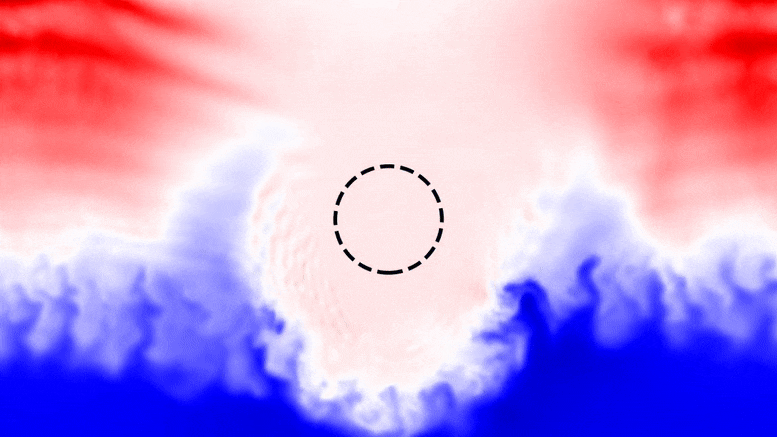
Researchers study smaller magnetospheres, sometimes only millimeters thick, in the laboratory. These mini-magnetospheres, observed around comets and certain lunar regions, have potential applications for spacecraft propulsion and serve as valuable testbeds for studying larger, planet-sized magnetospheres.
Experimental platform combines Large Plasma Device with lasers, magnetic dipoles; reveals insights about Earth’s shield against solar wind.
A magnetosphere forms around any magnetized object, such as a planet, that is immersed within a stream of ionized gas, called plasma. Because Earth possesses an intrinsic magnetic field, the planet is surrounded by a large magnetosphere that extends out into space, blocks lethal cosmic rays and particles from the sun and stars, and allows life itself to exist.
In Physics of Plasmas, by AIP Publishing, scientists from Princeton, UCLA, and the Instituto Superior Técnico, Portugal, report a method to study smaller magnetospheres, sometimes just millimeters thick, in the laboratory.
These mini-magnetospheres have been observed around comets and near certain regions of the moon and have been suggested to propel spacecraft. They are good testbeds for studying larger planet-sized magnetospheres.
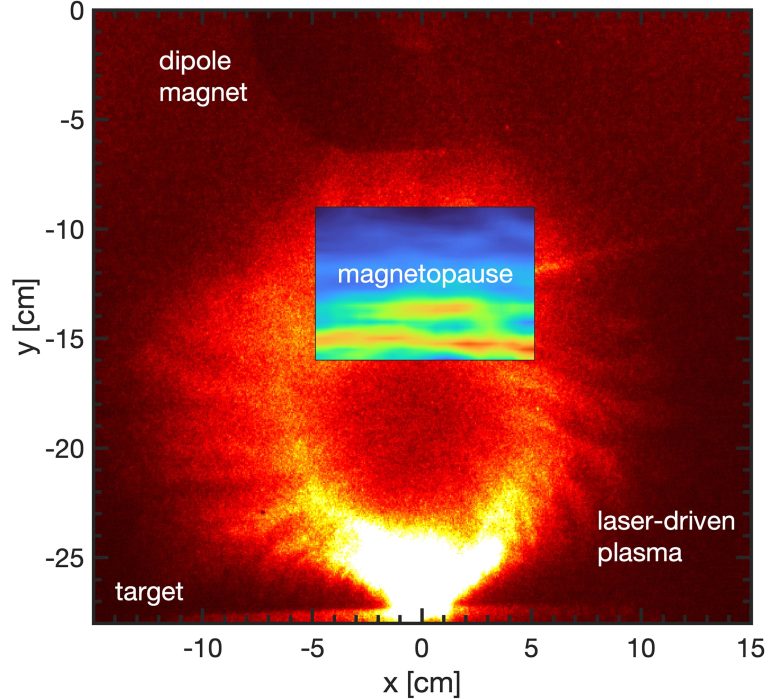
Image of the laser-driven plasma expanding into the dipole magnetic field. Magnetic field measurements showing the location of the magnetopause are overlaid. Credit: Derek Schaeffer
Previous laboratory experiments have been carried out utilizing plasma wind tunnels or high-energy lasers to create mini-magnetospheres. However, these earlier experiments were limited to 1D measurements of magnetic fields that do not capture the full 3D behavior scientists need to understand.
“To overcome these limitations, we have developed a new experimental platform to study mini-magnetospheres on the Large Plasma Device (LAPD) at UCLA,” said author Derek Schaeffer.
This platform combines the magnetic field of the LAPD with a fast laser-driven plasma and a current-driven dipole magnet.
The LAPD magnetic field provides a model of the solar system’s interplanetary magnetic field, while the laser-driven plasma models the solar wind and the dipole magnet provides a model for the Earth’s inherent magnetic field. Motorized probes allow system scans in three dimensions by combining data from tens of thousands of laser shots.
Simulation of a laser-driven plasma expanding into a dipole magnetic field. Credit: Filipe Cruz
One advantage to using this setup is that the magnetic field and other parameters can be carefully varied and controlled.
If the dipole magnet is switched off, all signs of a magnetosphere disappear. When the magnetic field of the dipole is switched on, a magnetopause can be detected, which is key evidence of the formation of a magnetosphere.
A magnetopause is the place in the magnetosphere where pressure from the planetary magnetic field is exactly balanced by the solar wind. The experiments revealed that as the dipole magnetic field is increased, the magnetopause gets larger and stronger.
The effect on the magnetopause was predicted by computer simulations, which were carried out by the investigators to understand and validate their experimental results more fully. These simulations will also guide future experiments, including studies utilizing a cathode recently installed on the LAPD.
“The new cathode will enable faster plasma flows, which in turn will allow us to study the bow shocks observed around many planets,” Schaeffer said.
Other experiments will study magnetic reconnection, an important process in Earth’s magnetosphere in which magnetic fields annihilate to release tremendous energy.
Reference: “Laser-driven, ion-scale magnetospheres in laboratory plasmas. I. Experimental platform and first results” by Derek B. Schaeffer, Filipe D. Cruz, Robert S. Dorst, Fabio Cruz, Peter V. Heuer, Carmen G. Constantin, Patrick Pribyl, Christoph Niemann, Luis O. Silva and Amitava Bhattacharjee, 12 April 2022, Physics of Plasmas.
DOI: 10.1063/5.0084353



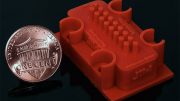
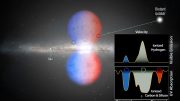
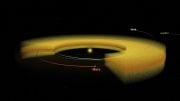



Be the first to comment on "Stunning Plasma Experiment: Modeling Earth’s Magnetosphere in the Laboratory"